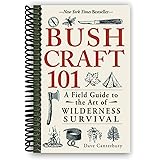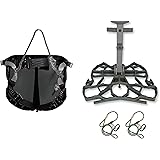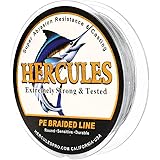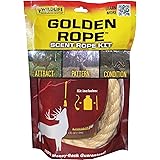The wilderness holds countless challenges, but it also offers ingenious solutions for those prepared to look. In the video above, we get a glimpse into some of the 35 valuable survival hacks that can make all the difference in an unexpected outdoor situation. While the demonstrations are simple, they highlight a crucial truth: resourcefulness is your best tool in the wild.
Mastering basic wilderness survival skills isn’t just for extreme adventurers; it’s a vital aspect of preparedness for anyone who spends time outdoors, from campers to hikers. This post delves deeper into the fundamental concepts behind these quick fixes, expanding on the video’s demonstrations to equip you with foundational knowledge for various scenarios. Learning these survival hacks can empower you, transforming potential dangers into manageable challenges.
Essential Wilderness Survival Skills You Need to Know
When unexpected events unfold in nature, having practical knowledge can be a lifesaver. From securing necessities like water and food to improvising tools, these core survival skills build your confidence and capability in any environment. Let’s explore several key areas, drawing inspiration from the ingenious solutions showcased in the video.
1. Securing Potable Water Sources
Dehydration is a significant threat in any survival scenario, often more immediate than starvation. The video briefly illustrates collecting dew, a simple yet effective method for gathering small amounts of precious water. This technique involves using absorbent cloth or even large leaves to sop up dew from vegetation in the early morning, then wringing it out into a container.
Beyond dew, there are other crucial ways to find and purify water. Firstly, seek out natural sources like springs, rivers, or streams, but always remember that even clear water can harbor harmful bacteria. Secondly, the video hints at charcoal’s versatility, and indeed, charcoal can be a key component in a DIY water filter. Layering crushed charcoal, sand, and gravel through a cloth-lined container helps remove larger particles and some impurities, though boiling remains the most reliable method to kill pathogens. Always prioritize hydration and conserve the water you find.
2. Foraging and Procuring Food in the Wild
While often a lower priority than water, food provides essential energy for survival. The video showcases several interesting food-related survival hacks, from using worms as bait to identifying natural edibles like tomatoes, reed leaves, and green grapes. Learning to safely identify local flora and fauna is paramount for anyone venturing into the wilderness.
Firstly, bait like worms, easily attracted by vibration as shown in the video, can be crucial for fishing. A simple line and hook fashioned from natural materials can turn a small stream into a vital food source. Secondly, foraging for plants like wild tomatoes or the tender parts of reed leaves can supplement your diet, offering vitamins and minerals. However, extreme caution is necessary; many edible plants have poisonous look-alikes. Never consume a wild plant unless you are 100% certain of its identification. Focus on commonly known, non-toxic options and prioritize small, easily digestible finds.
3. Improvising Tools and Shelter
Resourcefulness shines when you can turn everyday items or natural elements into functional tools. The video’s “eternal engine” concept, utilizing a steel nail and plastic rope, speaks to the power of improvisation. While perhaps not a true perpetual motion device, it demonstrates how ingenuity can create simple mechanisms from found objects, which is a core tenet of wilderness survival.
Beyond these creative survival hacks, consider the fundamental need for shelter. Stones, as noted in the video for comfort, can also be part of a more substantial structure. Constructing a basic lean-to or a debris hut using branches, leaves, and other natural materials offers protection from the elements. Furthermore, plastic rope and tape, shown in the video, become invaluable for tying, securing, and repairing. Learning to fashion cordage from natural fibers like inner bark can also unlock a world of building possibilities, from fishing lines to shelter frames.
4. Basic First Aid and Natural Remedies
Accidents can happen quickly in the wild, making basic first aid knowledge indispensable. The video features aloe vera and gauze, highlighting their importance in treating minor injuries. Aloe vera, a common plant in many regions, is renowned for its soothing properties for burns, cuts, and irritations. Simply extracting the juice and applying it can provide significant relief.
Gauze, as shown, is vital for wound dressing, helping to keep cuts clean and preventing infection. Beyond these specific items, understanding how to clean wounds, stop bleeding, and immobilize sprains are critical survival skills. Carrying a basic first aid kit is always advisable, but knowing how to improvise with natural materials—such as using clean cloths for bandages or splinting with sticks—can be a lifesaver when conventional supplies are unavailable. Prevention, through careful movement and awareness of your surroundings, remains your best defense against injury.
5. Fire Craft and Cooking
Fire is a cornerstone of survival, providing warmth, light, protection from animals, and the means to purify water and cook food. The video indirectly highlights fire’s role through charcoal and the steam cooking of green chili and potatoes. Charcoal itself is a product of incomplete combustion and can be useful for water filtration or even as a drawing tool for signaling.
Mastering fire starting is a fundamental survival hack. While the video doesn’t show the ignition, understanding how to build a fire, even with primitive methods like friction (bow drill or hand drill), is invaluable. Once you have a fire, cooking with steam, as demonstrated with the chili and potatoes, is an efficient way to prepare food while preserving nutrients. This often involves wrapping food in leaves and placing it near or on hot coals, or using a simple pit oven. Fire transforms raw resources into sustenance and comfort, making it one of the most vital wilderness survival skills.
6. Navigational Awareness and Signaling
Though not explicitly shown in the video, knowing your direction and having the ability to signal for help are crucial survival hacks. Losing your way can quickly turn a minor inconvenience into a life-threatening situation. Learning to navigate using natural cues, such as the sun’s position, star patterns, or even moss growth on trees, can prevent you from becoming truly lost.
If you do find yourself disoriented, knowing how to signal for rescue is paramount. Large ground signals, smoke signals from a fire (especially three consecutive fires, which is a universal distress signal), or using reflective surfaces to flash light are all effective methods. Carrying a whistle can also provide an easily audible signal over long distances. Combining directional awareness with effective signaling significantly increases your chances of a successful rescue in a wilderness survival scenario.
Learning and practicing these valuable survival hacks and wilderness survival skills can instill a deep sense of confidence and readiness. It’s about empowering yourself with the knowledge to thrive, not just survive, when faced with the unpredictable beauty and challenges of the wild.











